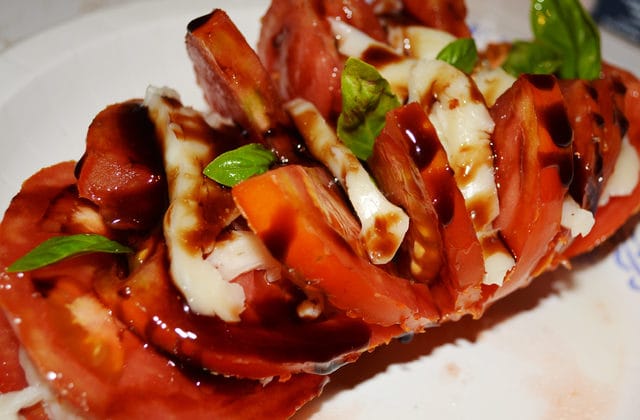
By Andrea Chaffin

Regular Salt readers may recall that earlier this year I wrote about checking some items off on my bucket list. I’m happy to report I did just that this summer.
I drank a Bloody Mary on the beach. I went to a big music concert. I ate shrimp and scallops fresh out of the ocean. Those experiences went beautifully. And, recently, I made homemade mozzarella. Let’s just say it didn’t go exactly as planned, but it was more fun than expected.
If you’re new to cheese making, mozzarella is considered a good place to start. It requires few ingredients and no aging. You can go from milk to eating cheese in 30 minutes. Perfect for an impatient girl like myself.
I researched and planned it for months. After coordinating a date with my friend and fellow cheese aficionado, Brynne, the day was circled on my calendar for weeks in advance.
“One week until Cheese Day!” we would send in texts with way too many emojis.
For step-by-step details on the procedure, I turned to my food mentor: The Pioneer Woman. Her recipe said the mixture was supposed to eventually turn into a solid form. Ours never did — at best it looked like cottage cheese floating in a pot of whey. But, it still created balls of fresh, warm cheese. We used it to make hasselback caprese tomatoes and pizzas cooked on the smoker (the best pizzas we had ever had).
And, of course, to just eat.
A ball of fresh, homemade mozzarella cheese drizzled in good olive oil and herbs would make for an impressive holiday appetizer.
The next item on the bucket list? Homemade wine to pair with the cheese!
HOMEMADE MOZZARELLA
Ingredients:
1 gallon whole milk
1 1/2 teaspoons citric acid powder
1/4 teaspoon liquid vegetable rennet combined with 1 cup of water
1 to 2 teaspoons kosher salt
Directions:
1. Sprinkle the citric acid powder (crush tablets if using) into a cool, empty, large non-reactive stockpot. Pour 1/4 cup water over it and stir it to dissolve.
2. Pour the milk into the citric acid solution and stir it to combine.
3. Put the pot over medium-low heat and heat it to 90 F (use an instant read thermometer.) You may notice the milk beginning to curdle, but this is a good thing.
4. When the milk reaches 90 F, remove the pan from the burner and pour in the rennet mixed with water.
5. Stir the mixture with a gentle, circular, up-and-down motion for about 30 seconds, then use the spoon to stop the motion of the milk so it will “be still.”
6. Place the lid on the pot and walk away and live your life for exactly five minutes. Don’t touch the pan!
7. After five minutes, the mixture should resemble a very soft custard. (Mine never did.)
8. With a spatula long enough to reach the bottom of the pot (we used an offset spatula), cut the curd into a 1-inch checkerboard pattern, making lines across, then lines in the other direction.
9. Return the pot to the the burner over medium heat and stir it gently until the temperature of the whey (the liquid that separates from the curd) reaches 105 F.
10. Use a slotted spoon to transfer the curd to a colander set over a bowl.
12. Slowly spin around the colander to allow the whey to drain from the curd.
13. Remove the cheese and gently squeeze it a few times to drain off more excess whey.
14. Then transfer the cheese to a microwave-safe bowl and microwave the curd on high for 1 minute.
15. Remove the bowl from the microwave and pour off as much whey as you can.
16. Press the curd together with your hands and again drain off the whey that comes out.
17. Microwave it again on high for 35 seconds, then press the curd together again to drain the whey.
18. Knead and stretch the curd a bit to drain more whey, then microwave it one last time for 35 seconds.
19. Knead in the salt and roll it under itself until it forms a neat ball.
20. Then set the ball into an ice water bath and let it rest in there until totally cool.
(Recipe from The Pioneer Woman.)
ID, 'source', true); $sourcelink = get_post_meta($post->ID, 'sourcelink', true); $sourcestring = '' . __('SOURCE','gabfire') . ''; if ($sourcelink != '') { echo "
$sourcestring: $source
"; } elseif ($source != '') { echo "$sourcestring: $source
"; } // Display pagination $args = array( 'before' => '' . __('Pages:','gabfire'), 'after' => '
', 'link_before' => '', 'link_after' => '', 'next_or_number' => 'number', 'nextpagelink' => __('Next page', 'gabfire'), 'previouspagelink' => __('Previous page', 'gabfire'), 'pagelink' => '%', 'echo' => 1 ); wp_link_pages($args); // Display edit post link to site admin edit_post_link(__('Edit','gabfire'),'','
'); // Post Widget gab_dynamic_sidebar('PostWidget'); ?>